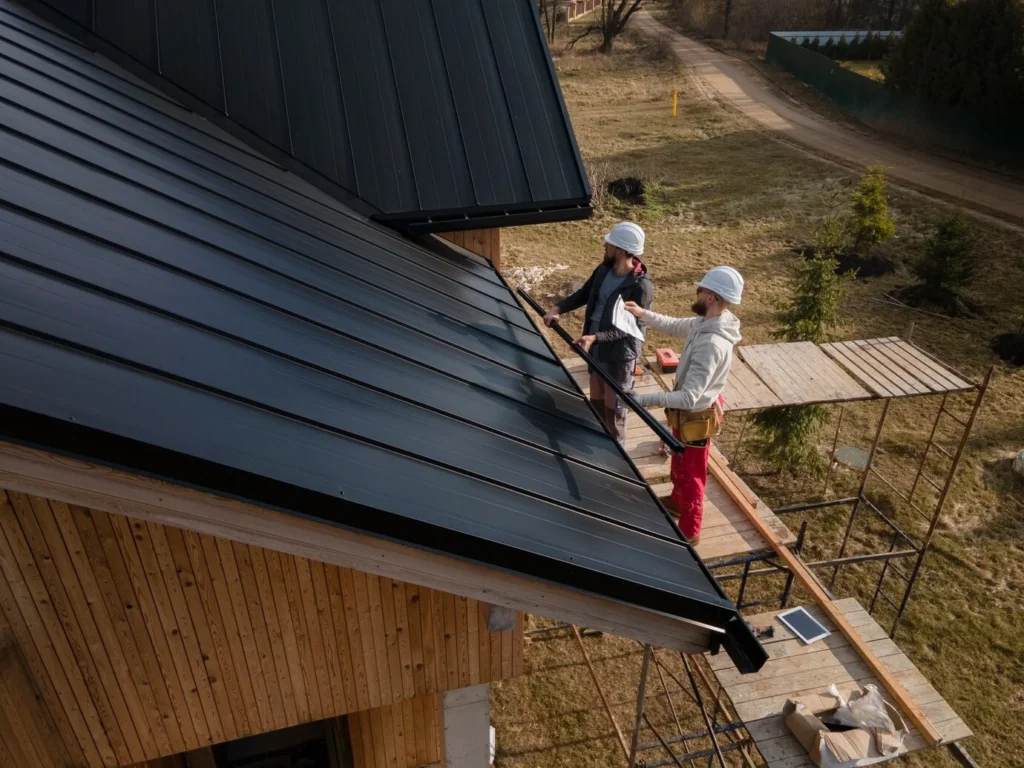Key Takeaways
- Recognize the advantages of various roofing materials.
- Learn the importance of selecting quality siding for your home.
- Discover maintenance tips to increase the longevity of your exterior.
- Identify signs it may be time to repair or replace your roofing or siding.
- Explore how sustainability can play a role in your choices.
Table of Contents
- Choosing the Right Roofing Material
- Importance of Quality Siding
- Maintenance for Longevity
- When to Repair or Replace
- Sustainable Options
Choosing the Right Roofing Material
The journey to a more resilient and aesthetically pleasing home often begins with the roof. Selecting the suitable roofing material is crucial as it influences your house’s durability, energy efficiency, and overall look. Concrete tiles emerge as a top contender for homeowners considering long-term benefits. Known for their robustness and ability to withstand severe weather, these tiles can last up to fifty years with proper maintenance. However, they are heavier, necessitating a supportive roofing structure.
In contrast, asphalt shingles offer a versatile and cost-effective solution. Their popularity is due to their adaptability to various home styles and climates. Many people choose them since they are simple to install, fix, and replace. When considering a roof replacement, selecting a suitable material improves your home’s functionality and substantially increases its market value. Consulting experts, such as a Bellevue Roofing and Siding Contractor, ensure informed decisions aligning with your property’s needs and future resale potential. Such a decision becomes even more critical in regions susceptible to weather extremes, where materials like slate, with their elegance or sleek modern metal roofs, provide both beauty and resilience.
Importance of Quality Siding
The often-overlooked siding of a house plays a pivotal role in its aesthetics and functionality. Beyond beautifying the facade, quality siding safeguards against weather conditions and is the first defensive line against external threats, such as mold and pests. Fiber cement and vinyl stand out due to their exceptional durability and low maintenance requirements. Fiber cement, in particular, provides a stunning finish while withstanding cracking and rotting, common issues in more traditional materials.
At the forefront of energy savings, selecting the correct siding type can improve a home’s energy efficiency. As experts at the U.S. Department of Energy highlight, certain types of siding, especially those with added insulation, help maintain comfortable indoor temperatures by reducing thermal bridging. This reduction leads to an optimized heating and cooling system, thereby lowering energy bills, an attractive feature for energy-conscious homeowners.
Maintenance for Longevity
The secret to maximizing the lifespan of your roofing and siding lies in diligent maintenance practices. A well-thought-out routine can prevent minor damages from escalating into significant problems. Begin with regular inspections, ideally performed each spring and fall, and always after any significant weather event. This can help catch issues early, such as misaligned shingles or tiny siding cracks that could let moisture seep in.
Pristine cleanliness can also extend the structural integrity of these home components. Start by clearing debris, leaves, and branches from gutters and downspouts, ensuring proper water flow during rainstorms. Regularly cleaning these structures prevents obstructions that could cause water backups, leading to potential leaks or structural damage. Additionally, exterior siding should be washed annually with recommended cleaners or water and a mild detergent to prevent mold and mildew growth.
When to Repair or Replace
Whether your roofing or siding demands repair or a complete overhaul, it is often challenging yet critical for homeowners. Symptoms such as missing shingles, ongoing leaks, or an abrupt rise in energy costs indicate the necessity for quick action. These could indicate compromised insulation or structural damage that could worsen if unaddressed over time.
Professional evaluations are invaluable in making the right call. Experts can offer assessments to help determine the extent of the damage and whether patch repairs will suffice or if a complete replacement will offer better long-term benefits. Recognizing the value of prompt action helps stop little accidents from becoming more significant problems that could significantly influence household finances.
Sustainable Options
Sustainability is not just a buzzword; it is rapidly becoming a decisive factor in home improvement decisions as more homeowners recognize its long-term benefits. Eco-friendly roofing and siding materials reduce your home’s environmental impact and enhance energy efficiency. Materials such as recycled metal roofs are gaining popularity due to their durability and recyclability, offering modern aesthetic and ecological benefits.
Moreover, cool roofs, designed with reflective materials or coatings, can substantially reduce heat absorption, leading to cooler indoor climates and decreased reliance on air conditioning. The Royal Institute of British Architects asserts that sustainable construction techniques are essential to designing economically and environmentally beneficial homes. Lower energy bills and potential tax incentives for adopting these eco-friendly options make them compelling for contemporary homeowners.







